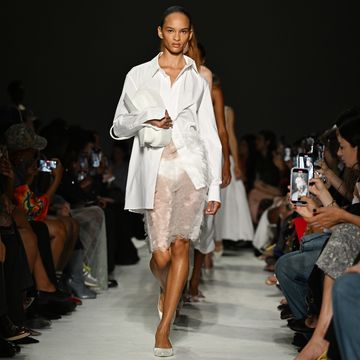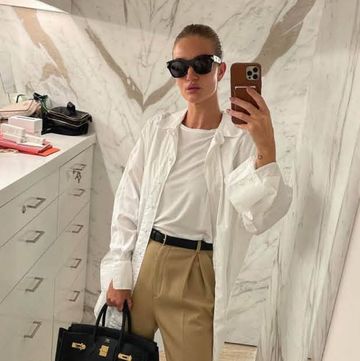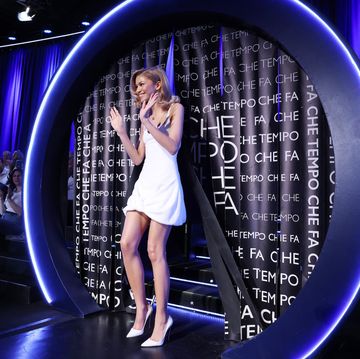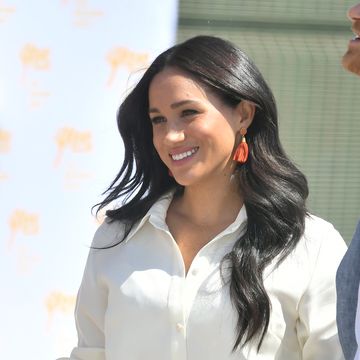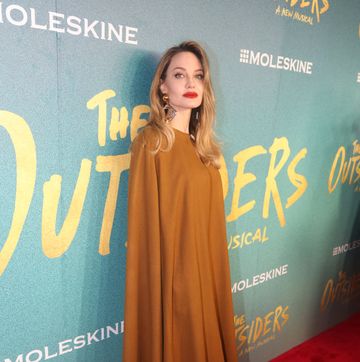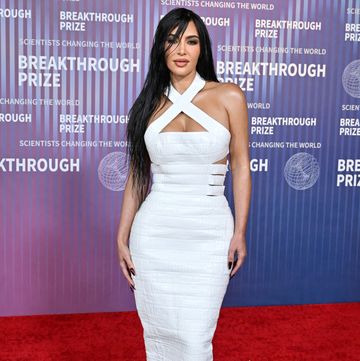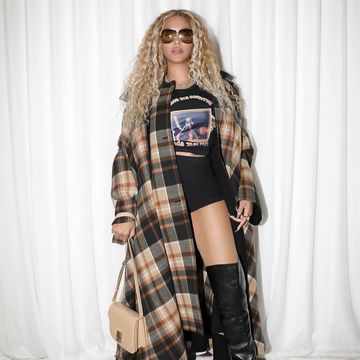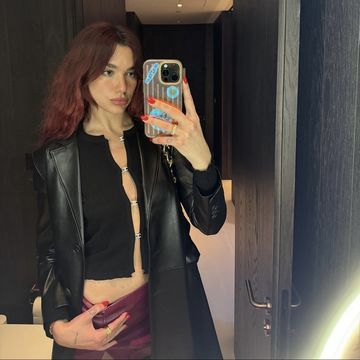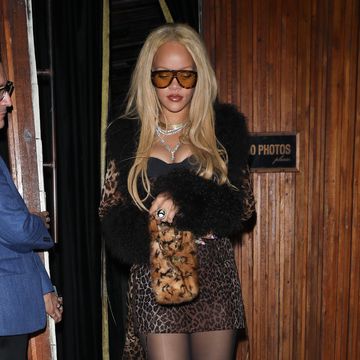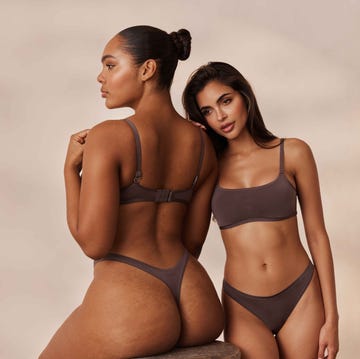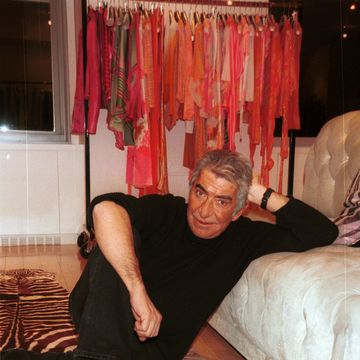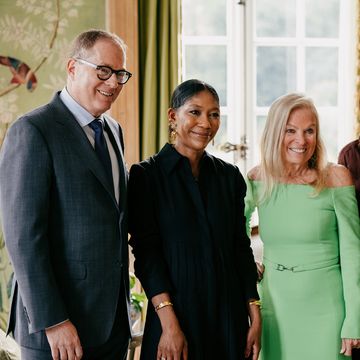The 28-year-old creative director of Balmain is sitting on a plush velvet sofa in the new Balmain store on London’s South Audley Street. It’s hours before he’s pictured at Annabel’s nightclub in a Balmain sandwich between Jourdan Dunn, Sigail Currie and Lily Donaldson. Here, in his skinny Balmain jeans and velvet tuxedo, he dishes on being fashion’s poster boy for diversity, his fashion heroes and who, exactly, his Balmain babe is…
You haven’t stopped since your show 10 days ago in Paris?
No, I didn’t. Which is good. It entertains me. That’s my life, that’s my job! Fashion is fashion. I’m really happy.
You’ve been to a lot of parties according to your Instagram…
I take a lot of selfies! After my show in Paris, we had an amazing Balmain dinner and party. Then we went straight to work with the buyers – it’s really important to have their feedback. They embraced it, so that made me really proud.
So where in the world is Balmain most popular?
The best is in London. Before even opening a store here, we obviously sell in Harrods and Selfridges – literally, our biggest quantities. We also sell a lot in Kuwait, Korea, LA and Italy.
Why do you think London is such a hot hub for Balmain?
It’s the most international city in the world, or at least in Europe. You can feel London embracing different cultures from Middle East, Russia, Brazil… I feel like people actually travel to London to buy clothes, whereas in Paris they call the boutique and get them to send.
Can you tell us more about your Balmain woman?
The only word that is really important to me is confidence. Confidence is really what makes her buy Balmain. It’s not about body shape. You can have Kim [Kardashian] who is a real woman’s body shape. You can have a super-tall model like Rosie Huntington-Whiteley. You can have so many different types of girls but the common point is that they are all strong and confident. That is why they are part of the army because they know what they want, they are not afraid and they have something to say.
How did the term ‘army’ come about?
Oh, because at one point everyone was saying ‘they’re just party dresses for party girls’ and I thought when you wear a party dress you don’t just go to a party and dance all night long. You feel wild and you go against the rules and have something loud to say. When you wear Balmain, you are sexy and confident and feel like a Balmain warrior – that’s where it started. I put so much work into my clothes, and the vision of my clothes is not clubbing. These are pieces that I’m proud of. And I think it’s an army, an army of the world.
You started at Balmain when you were 24; what have you learned?
You have to learn fast. There is no pity in fashion. There is no excuse. You have to go faster, you have to be stronger. I’m strong for my age because I’ve had to learn so many things from such a young age. I get all this influence from all these people. I learned a lot. But what I did four years ago, I would never do today.
In what way?
I was trying to please so many people around me. You learn in school how to be a designer. You don’t learn how to be a creative director – that’s something you have to learn step-by-step.
How has your style evolved since?
I kept the original story of craftsmanship but I focus more on tailoring now, and a vision. What I am doing now is expressing more than just the clothes; it’s a vision of a woman, of diversity. Sometimes it goes too political for fashion, but actually I’m really proud that I have the chance to express it. Four years ago I wouldn’t express my culture, my youth, my generation, I would try to please. But today I’m trying to please my followers.
Do you feel like you’ve become fashion’s poster boy for diversity?
It’s not easy, but that is what’s entertaining now – expressing something really deep that really belongs to my childhood, to my background. I don’t know my biological parents because I was born in an orphanage, so actually I’m part of the nation – the army of the world and that is what I’m building now! I use a lot of black women in my collections – that’s really important. Fashion needs more ethnicities, more diversities and strong women. Some people think it’s too political to bring diversity, but every good art has something that disturbs, or that you embrace or gives you an emotion – that’s Balmain today, you can love, you can hate but you have a feeling about it.
Your design heroes growing up?
Yves Saint Laurent, Pierre Balmain, Cristóbal Balenciaga, Versace, Giorgio Armani. These people changed the world and Coco Chanel. I love the top models and pop culture of the 1990s. I remember the Versace shows, Elton John, Madonna, Naomi and Claudia – that’s what made me dream as a kid and that’s also what I’m bringing to Balmain today. US pop culture can be a good mix with 1970s and 1980s French couture – remember the exoticism of Saint Laurent and Pierre Balmain, the mixing of culture in their shows? So it’s not so weird what I’m doing today, it’s just really French.
And fresh!
French and fresh – that’s a hashtag!

